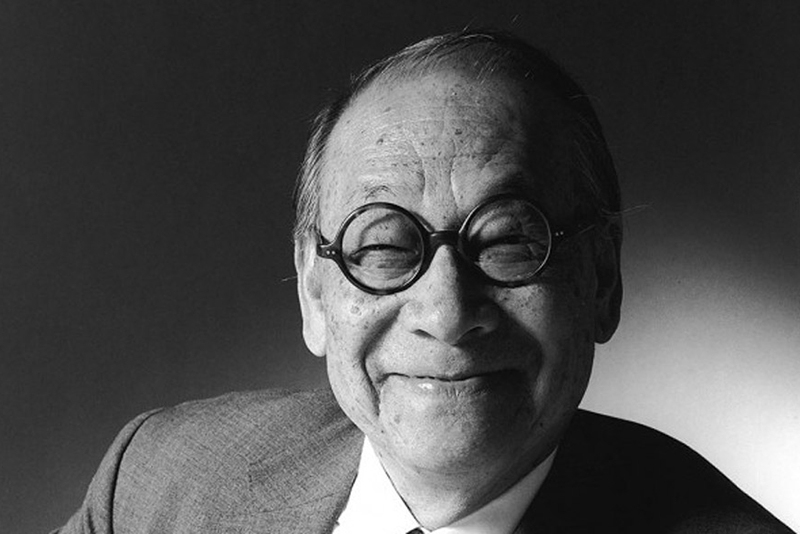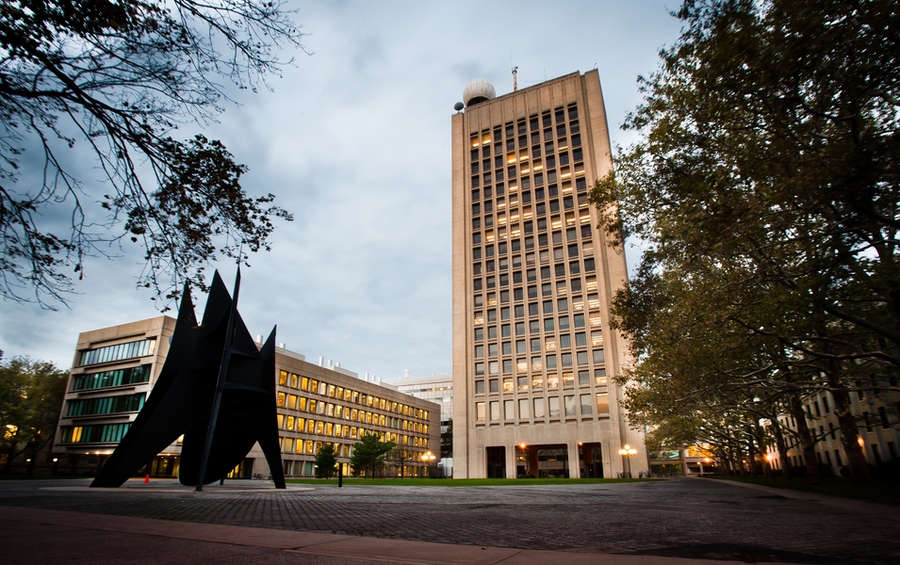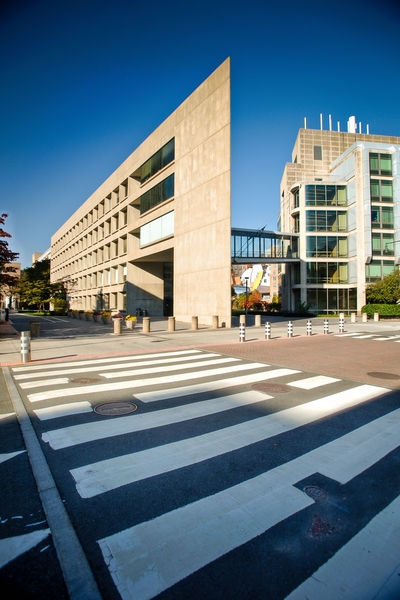Celebrated architect I.M. Pei ’40 died on May 16 in New York City. He was 102.
Over the course of a long international career, he designed notable buildings that included museums, cultural and research centers, civic buildings, and office towers. A dedicated modernist, he received the architecture world’s highest honors for his large body of work.
Among his best-known projects are the glass pyramid entrance pavilion he designed for the Louvre museum in Paris, and the East Building of the National Gallery of Art in Washington.
In 1964, Jacqueline Kennedy chose Pei to design the John F. Kennedy Presidential Library and Museum in Dorchester, Massachusetts. Other Boston-area projects include the west wing of the Museum of Fine Arts.
“Pei was a giant whose vast and varied output consistently rose to the civic responsibility of architecture, elevating cultural, institutional, and residential buildings alike to monuments of modern life,” says Hashim Sarkis, dean of the MIT School of Architecture and Planning.
Pei designed four buildings for the MIT campus:
- Cecil and Ida Green Building for Earth Sciences (Building 54), 1962
- Camille Edouard Dreyfus Chemistry Building (Building 18), 1967
- Ralph Landau Building for Chemical Engineering (Building 66), 1976
- Wiesner Building (Building E15, original home of the MIT Media Lab), 1985
“Pei's contribution to the physical environment of MIT has been significant, with several key buildings that established the form of the contemporary campus,” says Andrew Scott, professor and acting head of the Department of Architecture. “Building 66, which poses a triangular form that finely resolves the forces of the urban geometry, and Building 18, which elegantly frames the landscape of the inner quads, are still personal favorites and outstanding laboratory typologies to this day.”
Ieoh Ming Pei was born on April 26, 1917, in Canton (now Guangzhou), China. The son of a prominent banker, he grew up in Shanghai and Hong Kong. Pei began his college studies at the University of Pennsylvania before transferring to MIT, from which he graduated in 1940 with a bachelor of architecture degree. His thesis title was “Standardized Propaganda Units for War Time and Peace Time China.”
He met his wife, Eileen (Ay-Ling) Loo, also from China, while he was at MIT and she was studying art at Wellesley College. They married when she graduated, in 1942; both then pursued graduate study at Harvard University, from which he received a master’s degree in 1946.
After teaching briefly at Harvard, Pei worked for New York commercial real estate developer William Zeckendorf for 12 years. During this time he hired a former student, Henry Cobb, with whom he would be professionally associated for six decades. Pei founded his own firm, I.M. Pei and Associates (later Pei, Cobb and Freed), in 1955 with Cobb and Eason Leonard. Among a vast number of projects, the firm produced the 700-foot-tall John Hancock Tower in Boston, designed by Cobb.
“I.M. Pei’s work across many contexts and cultures has an enduring, timeless quality,” says Scott. “He was a master-architect with a deep understanding and sophistication with issues of urbanism, scale of object and detail, spatial orchestration, and formal composition.”
Among his many awards and honors were the Pritzker Prize in 1983; the Gold Medal of the American Institute of Architects in 1979; and the Japanese Praemium Imperiale, for lifetime achievement, in 1989.
Pei was member of the MIT Corporation (1972–1977 and 1978–1983) and an honorary member of the Council for the Arts at MIT.
He is survived by sons Li Chung Pei and Chien Chung Pei, both architects; daughter Liane Pei, a lawyer; and grandchildren and great-grandchildren. His son T’ing Chung Pei MCP ‘67, an urban planner, died in 2003. Eileen Pei died in 2014.











